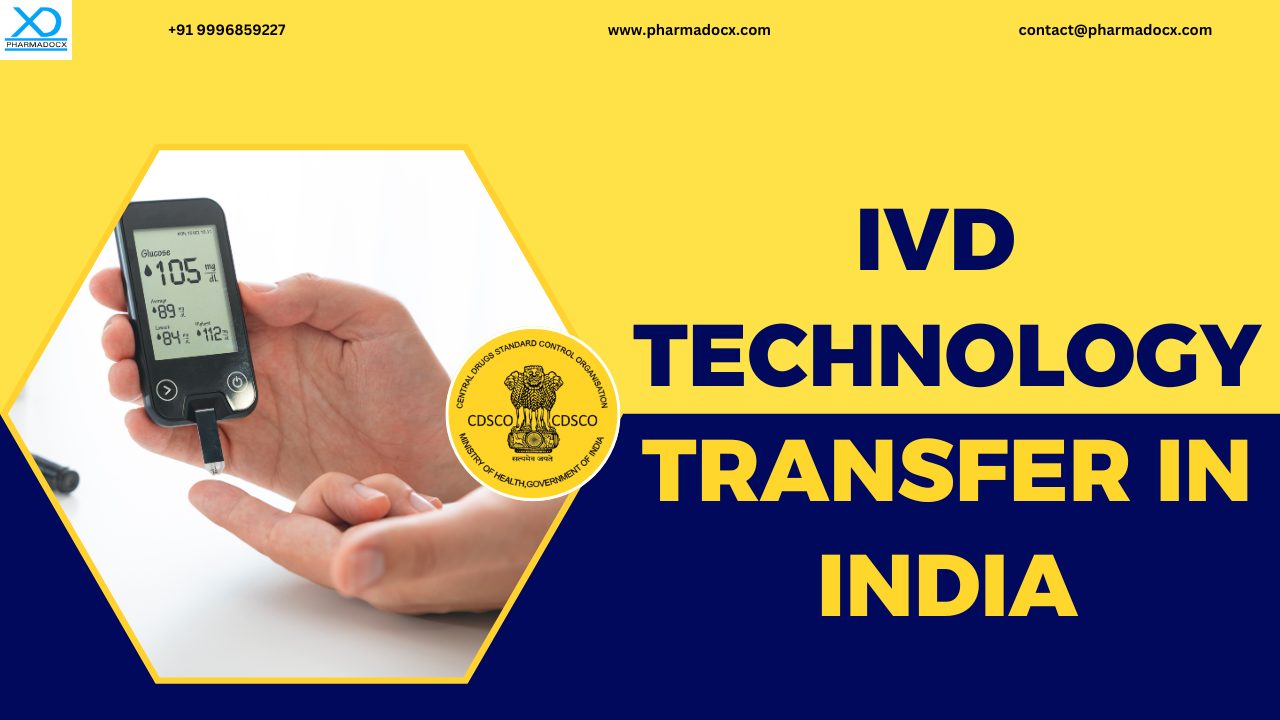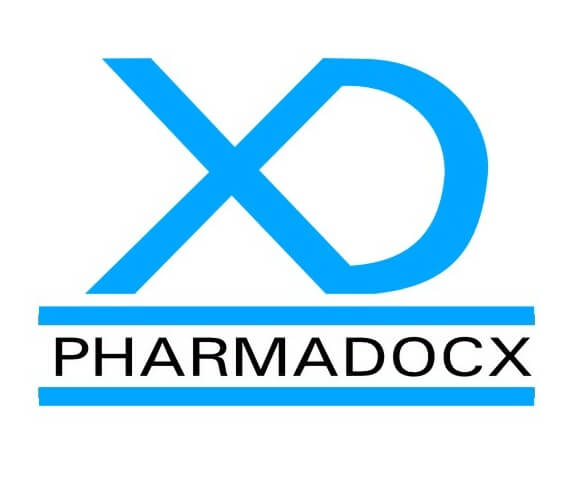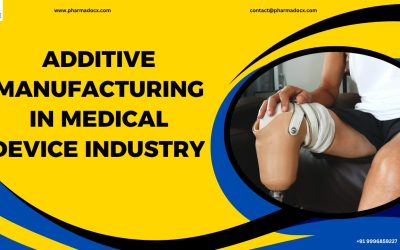IVD technology transfer is crucial for manufacturers transitioning IVDs from development to full-scale production or relocating manufacturing between facilities. A successful transfer demands meticulous planning, comprehensive documentation, and alignment with regulatory requirements and global standards, such as ISO 13485. When executed effectively, it helps scale efficiently, reduce production risks, and expedite market entry without compromising safety or clinical reliability. In this blog, we will delve into IVD technology transfer in India.
What is IVD technology transfer?
IVD technology transfer is the structured process of transferring the manufacturing, testing, and quality control knowledge of an IVD product from one entity or site to another. This transfer is usually done from R&D to production or between manufacturing facilities. It ensures that the product can be consistently and compliantly produced at scale, regardless of location.
IVD technology transfer facilitates global manufacturing strategies and outsourcing. Additionally, supports business continuity, especially during site changes or expansions. Technology transfer facilitates scale-up from pilot to commercial production. Moreover, it ensures audit readiness and regulatory compliance across jurisdictions
Key components of IVD technology transfer
- Process documentation: Detailed protocols, SOPs, and specifications for reagents, instruments, and test procedures have to be included. The documentation should include critical quality attributes and process parameters.
- Validation and verification: This process ensures that the receiving site can replicate the product’s performance. It includes method validation, equipment qualification, and stability studies.
- Training and knowledge sharing: Transfer of technical knowledge through hands-on training, workshops, and technical manuals.
- Regulatory alignment: Must meet local and international standards, such as ISO 13485, ISO 14971, and CDSCO requirements in India. It should include focussing on technical files, risk assessments, and labeling compliance.
- Quality system integration: Harmonizes QMS elements, such as CAPA, change control, and document management, between sites.
- Risk management: Identify and mitigate risks related to raw materials, process variability, and supplier reliability.
3 Key points to keep in mind during IVD technology transfer in India
1. Regulatory compliance
- CDSCO registration requirements: Ensure the IVD product is registered under the appropriate CDSCO pathway (MD 5 for Class A and B IVDs and MD 9 for Class C and D IVDs). Align with the Medical Device Rules, 2017, including classification, manufacturing processes, labeling, and import licensing.
- ISO 13485 certification: Both the transferring and receiving sites must operate under a certified QMS. Documentation must reflect traceability, risk controls, and design transfer protocols.
- Stability and performance validation: Follow CDSCO’s guidance on stability studies and performance verification during transfer. Include accelerated and real-time stability data for reagents and kits.
2. Technical and operational considerations
- Process mapping and documentation: Transfer all SOPs, batch records, and manufacturing instructions. Include critical quality parameters and acceptance criteria in the documentation.
- Method validation and equipment qualification: Validate analytical methods at the receiving site. Perform IQ/OQ/PQ for all instruments and test systems.
- Training and competency building: Conduct hands-on training for operators and QA personnel. Document competency assessments and training records.
3. Risk and quality management
- Change control and CAPA integration: Use formal change control to manage any deviations during transfer. Link CAPA findings to risk assessments and mitigation plans. Furthermore, document and approve any changes to equipment, processes, or materials during or after the transfer.
- Supplier and material qualification: Requalify suppliers if sourcing changes. Ensure raw materials meet specifications and are traceable.
- Audit readiness: Prepare for CDSCO inspections and internal audits. Maintain a technology transfer checklist and gap analysis.
Documents required for IVD technology transfer in India
For IVD technology transfer in India, especially under CDSCO and ISO 13485 frameworks, the documentation must be robust, traceable, and audit-ready. We have prepared a comprehensive list of key documents usually required.
- Core technology transfer documents: The technology transfer plan should include scope, objectives, timelines, roles, and responsibilities. Product dossier/technical files should include design specifications, intended use, packaging, labeling, and risk analysis. Additionally, clinical performance data and analytical validation should be provided. Bill of Materials (BoM)should include detailed list of components, reagents, instruments, and suppliers. Manufacturing process documents should cover SOPs, batch manufacturing records, process flow diagrams. Quality control procedure documentation should include incoming material inspection, in-process checks, and final release criteria. Validation and qualification reports should include equipment IQ/OQ/PQ and process validation.
- Design files: Product specifications, drawings, and schematics have to be included in the design file. Detailed list of raw materials and components have to be provided. Manufacturing process instructions and flowcharts are a must.
- Regulatory and QMS documentation: ISO 13485 certificate for both transferring and receiving sites. CDSCO license (MD 5 or MD 9, as applicable) will have to be provided. The risk management file has to be provided. Documented changes during transfer and their impact assessments. Staff competency assessments and training logs. CAPA and deviation reports have to be provided.
- Supporting documentation: Stability data that includes real-time and accelerated studies for reagents and kits. Packaging and labeling specifications that cover artwork, IFU, barcode, and regulatory symbols. Supplier qualification records covering audits, certificates, and material specifications. Audit trail and traceability matrix along with verification checkpoints have to be provided.
Assembly of IVD products in India
Effective assembly of in vitro diagnostic (IVD) products demands rigorous implementation of Quality Assurance (QA) and Quality Control (QC) protocols:
- Quality assurance (QA): Oversees the entire manufacturing workflow to ensure compliance with internal procedures and applicable regulatory standards.
- Quality control (QC): Verifies that each production batch meets predefined specifications prior to release.
- Automation integration: Incorporating semi-automated or fully automated assembly systems enhances operational efficiency, minimizes human error, and promotes consistent product quality.
3 Major benefits of a structured IVD technology transfer
A structured IVD technology transfer offers a wide range of strategic, operational, and regulatory advantages.
- Operational efficiency: Streamlines the transition from R&D to commercial manufacturing, reducing delays and bottlenecks. Standardized documentation and training minimize variability and human error during production. Automation and process optimization lead to higher throughput and resource utilization.
- Regulatory and quality assurance: Ensures traceability, validation, and compliance with CDSCO, ISO 13485, and other global standards. Maintains uniformity across batches and sites, which is critical for clinical reliability. Proactive risk assessments and CAPA integration reduce regulatory and operational risks.
- Strategic and market impact: Facilitates multi-site manufacturing and international market access. Accelerates the journey from prototype to market-ready product. Promotes knowledge sharing across teams, partners, and geographies.
Regulatory requirements for assembly of IVD products in India
Assembly of IVDs fall under manufacturing and must comply with CDSCO licensing requirements. We have provided a structured overview of the regulatory requirements for assembling IVD products in India.
1. CDSCO licensing
Manufacturers assembling IVDs must obtain MD-5 License for Class A/B IVD devices (via State Licensing Authority) or MD-9 License for Class C/D IVD devices (via CDSCO Central Licensing Authority). Importers must hold a valid MD-15 license for imported IVDs.
2. Quality system requirements
- ISO 13485 compliance is mandatory for manufacturers and assemblers. QMS elements like document control, CAPA, internal audits, and supplier management should be in place.
- Facilities must follow GMP principles, including cleanroom standards, equipment calibration, and personnel hygiene.
- Labeling and packaging must comply with MDR 2017 labeling rules.
3. Quality control (QC)
Each batch must undergo verification against predefined specifications before release in the market.
4. Stability and performance testing
Reagents and kits have to undergo stability and performance testing, including real-time and accelerated studies.
Choose Pharmadocx Consultants for a smooth IVD technology transfer in India
With extensive expertise in regulatory requirements and technology transfer, we offer tailored solutions for IVD manufacturers and assemblers in India. By availing our all-encompassing service, you can have a smooth IVD technology transfer in India. Email at [email protected] or call/Whatsapp on 9996859227 to get in touch.





